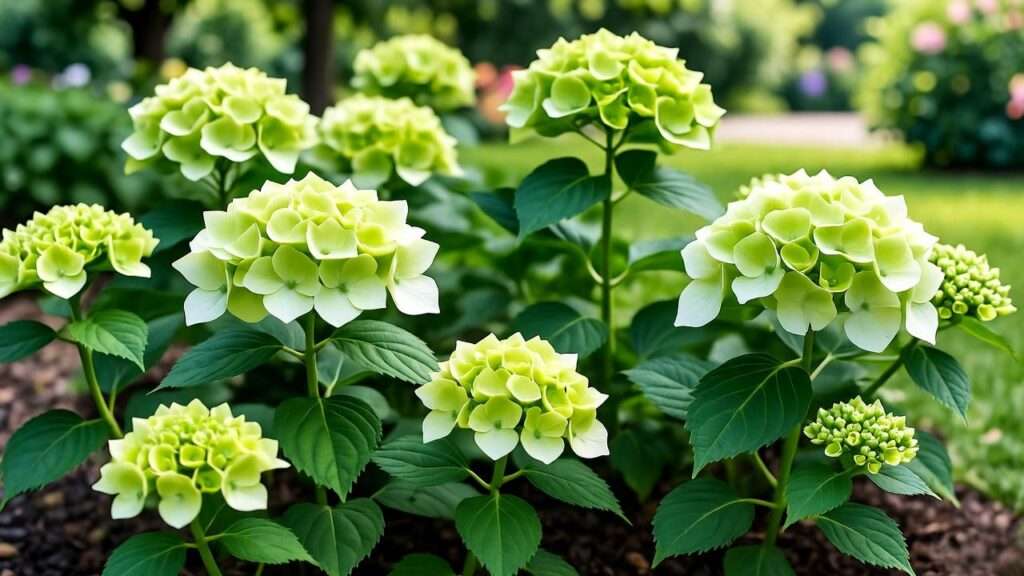Imagine stepping into your garden and being greeted by the vibrant, lime-green blooms of green hydrangea plants, their lush foliage swaying gently in the breeze. These stunning shrubs are a gardener’s dream, adding elegance and charm to any landscape. Yet, keeping green hydrangea plants thriving can be a challenge—wilting blooms, yellowing leaves, or lackluster growth often frustrate even seasoned gardeners. If you’ve ever wondered how to ensure your green hydrangeas stay healthy and vibrant year-round, you’re in the right place. This comprehensive guide, backed by horticultural expertise and practical experience, shares seven essential tips to help your green hydrangeas flourish. Whether you’re a beginner or a seasoned gardener, these actionable strategies will transform your hydrangea care routine and elevate your garden’s beauty. 🌟
Understanding Green Hydrangea Plants 🌱
What Makes Green Hydrangeas Unique?
Green hydrangea plants, such as Hydrangea macrophylla ‘Limelight’ or ‘Annabelle,’ are celebrated for their striking lime-green or chartreuse blooms that transition to creamy white or pink as they mature. Unlike their blue or pink counterparts, green hydrangeas offer a fresh, neutral palette, making them versatile for garden designs, from modern landscapes to cottage-style borders. Their long blooming season—often from early summer to fall—makes them a favorite among gardeners. According to the American Horticultural Society, green hydrangea varieties like ‘Limelight’ are among the most popular for their adaptability across USDA zones 3–9 and low maintenance needs when properly cared for. Their large, rounded flower heads also make them ideal for cut flower arrangements, adding a touch of elegance indoors. 🌼
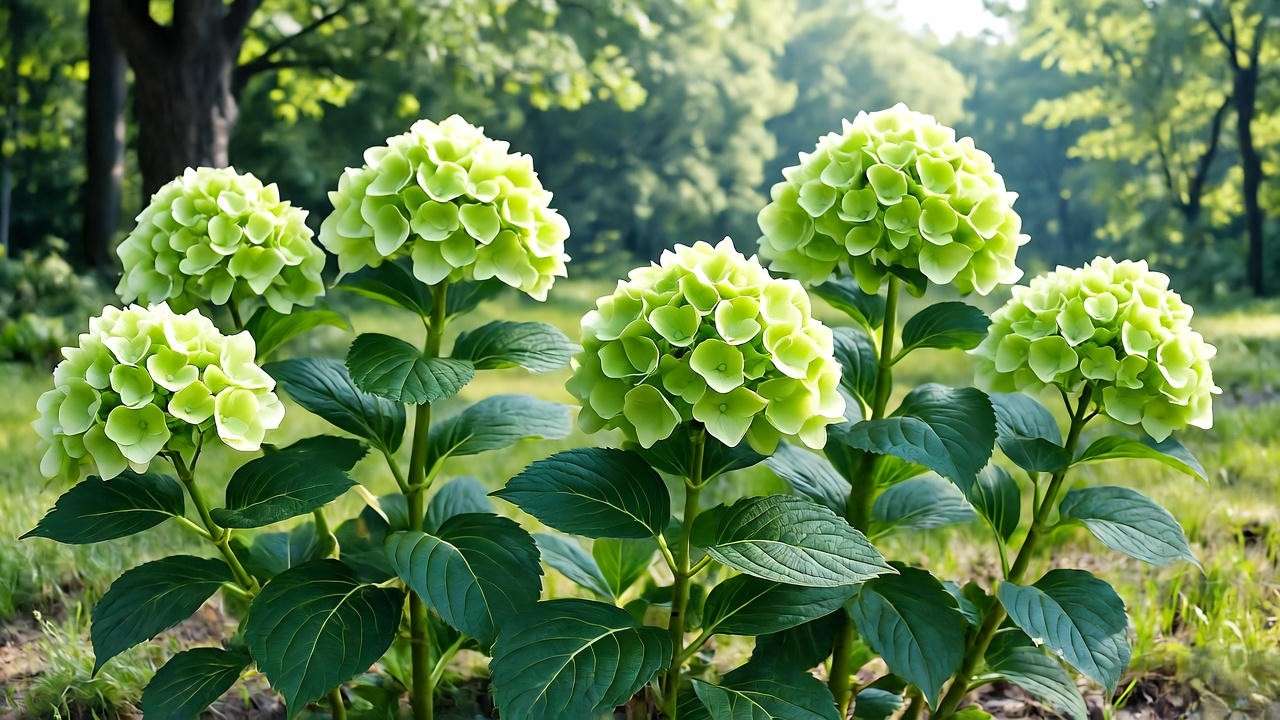
Ideal Growing Conditions for Green Hydrangeas
To thrive, green hydrangeas need the right environment. Most varieties prefer partial shade, with 4–6 hours of morning sunlight and protection from harsh afternoon rays. They flourish in well-draining, fertile soil rich in organic matter, with a pH between 5.5 and 6.5 to maintain their vibrant green hue. Overly alkaline soils can cause blooms to fade or change color unexpectedly. Watering is critical—these plants love consistent moisture but hate soggy roots. A common mistake is planting in full sun or compacted soil, which can lead to scorched leaves or stunted growth.
| Variety | Sunlight | Soil Type | Water Needs |
|---|---|---|---|
| ‘Limelight’ | Partial shade | Loamy, well-draining | Moderate, consistent |
| ‘Annabelle’ | Partial shade to full sun | Rich, slightly acidic | Regular, deep watering |
| ‘Incrediball’ | Partial shade | Fertile, moist | Consistent moisture |
Tip: Test your soil’s pH with a home kit (available at garden centers) to ensure it’s in the ideal range for green hydrangeas. Adjust with sulfur or lime as needed.
Tip 1 – Choosing the Right Location 🌞
The foundation of healthy green hydrangea plants lies in selecting the perfect spot. These plants thrive in partial shade, where they receive morning sun and afternoon protection. Too much sun can scorch leaves, while too little can reduce blooming. Assess your garden by observing light patterns throughout the day. For urban gardeners or those with limited space, green hydrangeas adapt beautifully to container gardening. Use large pots with drainage holes and place them on patios or balconies with filtered light.
Case Study: Sarah, a gardener in Seattle, transformed her shaded patio with potted ‘Limelight’ hydrangeas. By placing them near a north-facing wall with morning light, she achieved vibrant blooms all summer. Her secret? Rotating the pots every few weeks to ensure even light exposure.
Tip 2 – Mastering Soil Preparation 🌍
Soil is the backbone of green hydrangea health. These plants prefer loamy, well-draining soil enriched with organic matter like compost, aged manure, or peat moss. A pH of 5.5–6.5 is ideal for maintaining green blooms, as higher pH levels may cause flowers to shift to pink or blue. Test your soil using a pH meter and amend it if needed—sulfur lowers pH, while lime raises it. Incorporate 2–3 inches of compost into the top 6 inches of soil before planting to boost fertility and drainage.
Expert Insight: Dr. Jane Miller, a soil scientist at Cornell University, notes that consistent soil moisture and proper pH are critical for hydrangea vigor. “Green hydrangeas are sensitive to alkaline soils, which can inhibit nutrient uptake,” she explains. Regular soil testing every 1–2 years ensures long-term success.
Tip 3 – Watering Wisely 💧
Green hydrangeas are thirsty plants that require consistent moisture to thrive. Water deeply once or twice a week, ensuring the soil stays moist but not waterlogged. Overwatering can lead to root rot, while underwatering causes wilting and sparse blooms. Apply water at the base of the plant to avoid wetting foliage, which can encourage fungal diseases. Mulching with 2–3 inches of organic mulch, like bark or straw, helps retain moisture and regulate soil temperature.
Pro Tip: Consider installing a drip irrigation system for consistent hydration, especially in hot climates. Set it to deliver 1–2 gallons per plant weekly, adjusting based on rainfall.
Tip 4 – Fertilizing for Lush Growth 🌼
Fertilizing green hydrangeas promotes robust foliage and abundant blooms. Use a balanced 10-10-10 fertilizer or a phosphorus-rich formula (e.g., 10-20-10) to encourage flowering. Apply in early spring as new growth emerges and again in early summer. Avoid fertilizing after July, as late feeding can stimulate tender growth vulnerable to frost. Organic options, like fish emulsion or compost tea, are excellent for eco-conscious gardeners. Over-fertilization can burn roots or reduce blooms, so follow package instructions carefully.
Warning: Excess nitrogen can lead to lush foliage but fewer flowers. If you notice this, switch to a low-nitrogen, high-phosphorus fertilizer.
Tip 5 – Pruning for Health and Beauty ✂️
Pruning is essential for shaping green hydrangeas and encouraging prolific blooming. The timing depends on the variety: Hydrangea macrophylla (e.g., ‘Limelight’) blooms on new wood and should be pruned in late winter or early spring, while Hydrangea arborescens (e.g., ‘Annabelle’) can tolerate heavier pruning. Remove dead or damaged stems and cut back about one-third of the plant’s height to promote bushy growth. Use clean, sharp shears to avoid disease transmission.
Step-by-Step Pruning Guide:
- Sanitize pruning shears with rubbing alcohol.
- Remove dead or crossing branches at the base.
- Cut back stems to just above a healthy bud.
- Shape the plant for a rounded, natural look.
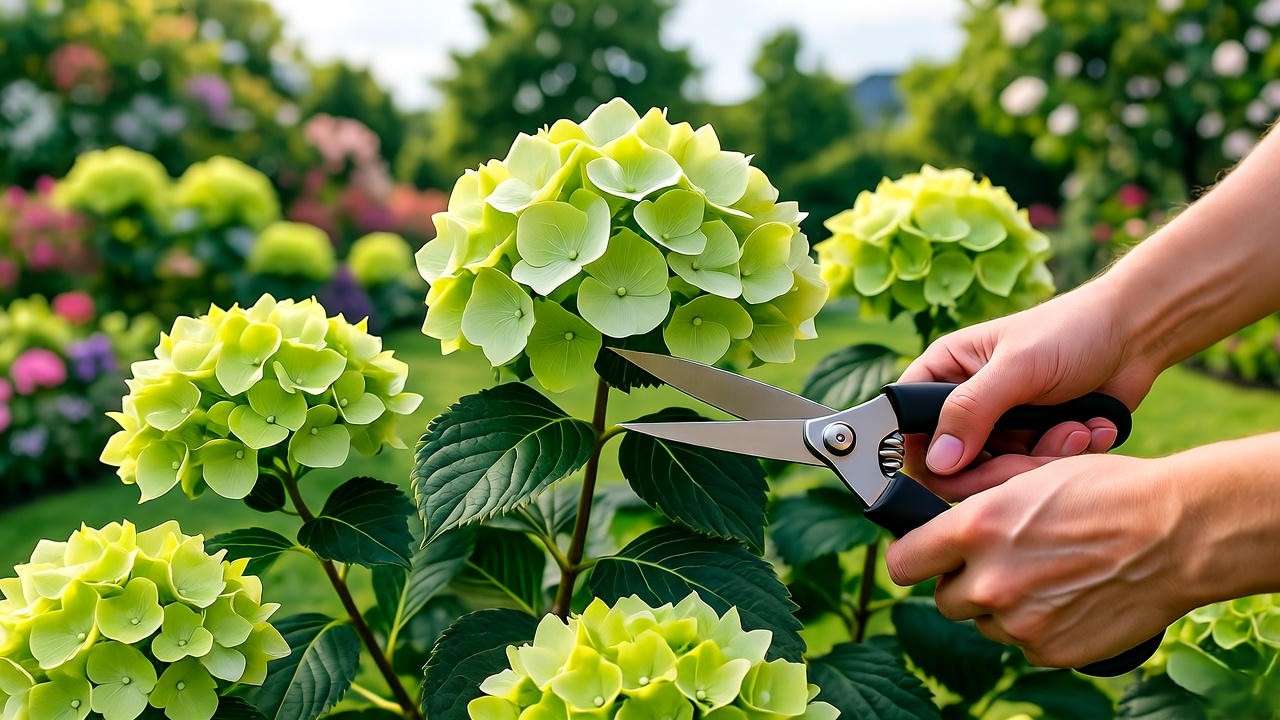
Visual Aid: For a detailed pruning tutorial, check out the Royal Horticultural Society’s video guide on hydrangea care (link to trusted source).
Tip 6 – Protecting Green Hydrangeas Year-Round ❄️☀️
Winter Care for Green Hydrangeas
In colder climates (USDA zones 3–5), green hydrangeas need protection from freezing temperatures. Insulate roots with a 3–4 inch layer of mulch, such as straw or shredded bark, and wrap stems with burlap to shield against windburn. For potted plants, move them to a sheltered area, like a garage, during extreme cold.
Winterizing Checklist:
- Apply mulch in late fall.
- Water deeply before the first frost.
- Wrap vulnerable plants with burlap or frost cloth.
Summer Maintenance
Summer heat can stress green hydrangeas, especially in warmer zones. Provide extra water during heatwaves, and use shade cloth or temporary covers to protect blooms from intense sun. Check soil moisture daily during hot spells.
Example: In Texas, gardener Maria saved her ‘Incrediball’ hydrangeas by installing a shade sail over her garden bed, reducing heat stress and preserving vibrant green blooms.
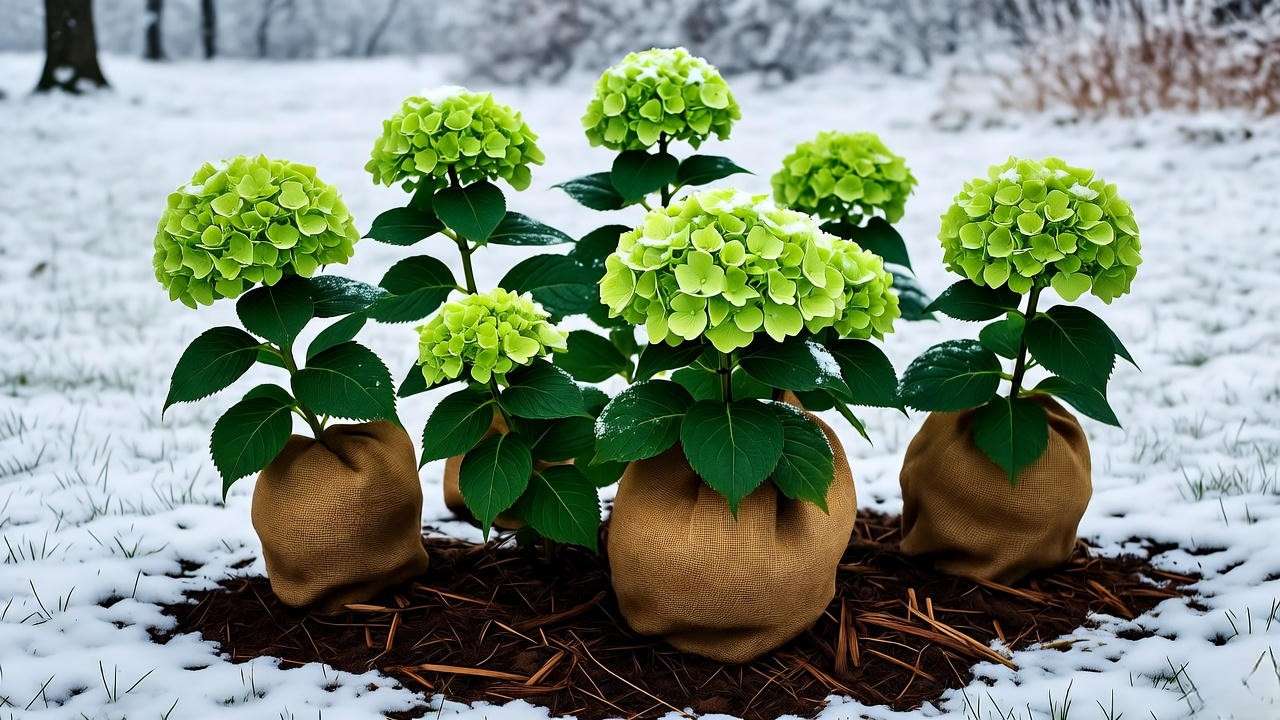
Tip 7 – Preventing and Managing Pests and Diseases 🐛
Green hydrangea plants are relatively resilient, but they can fall prey to pests and diseases if not properly cared for. Common pests include aphids, which suck sap from leaves, and spider mites, which cause stippling on foliage. Organic control methods, such as neem oil or insecticidal soap, are effective and eco-friendly. Spray affected areas early in the morning to avoid harming beneficial insects like ladybugs. Fungal diseases, such as powdery mildew (white, powdery coating on leaves) and leaf spot, thrive in humid conditions. To prevent these, ensure good air circulation by spacing plants 3–5 feet apart and avoiding overhead watering.
Expert Insight: According to the University of California’s Integrated Pest Management Program, regular monitoring and early intervention are key to controlling hydrangea pests. “Check the undersides of leaves weekly for aphids or mite webs,” advises entomologist Dr. Laura Chen. If diseases persist, apply a fungicide labeled for hydrangeas, following all safety guidelines.
Prevention Tips:
- Remove fallen leaves to reduce fungal spores.
- Use drip irrigation to keep foliage dry.
- Introduce beneficial insects, like lacewings, to control aphid populations naturally.
Troubleshooting Common Green Hydrangea Problems 🔍
Even with the best care, green hydrangea plants can encounter issues. Here’s how to address the most common problems:
| Problem | Possible Cause | Solution |
|---|---|---|
| No blooms | Improper pruning, too much shade | Prune at the right time, ensure 4–6 hours of sun |
| Yellowing leaves | Overwatering, nutrient deficiency | Adjust watering, apply balanced fertilizer |
| Wilting blooms | Underwatering, heat stress | Increase watering, provide afternoon shade |
| Bloom color changing | Soil pH too high or low | Test and adjust soil pH to 5.5–6.5 |
Quick Fix: If your green hydrangeas aren’t blooming, check your pruning habits. Cutting back Hydrangea macrophylla varieties too late in the season can remove next year’s flower buds. Stick to early spring pruning for best results.
Enhancing Your Garden with Green Hydrangeas 🎨
Green hydrangeas are a designer’s delight, offering versatility in landscaping and floral arrangements. Pair them with companion plants like ferns, hostas, or astilbes for a lush, textured garden bed. Their soft green blooms create a stunning contrast against darker foliage or vibrant flowers like purple salvia or red roses. In landscape design, use green hydrangeas as focal points in borders, hedges, or as centerpieces in circular beds. For cut flower arrangements, harvest blooms in the morning when they’re freshest, and place stems in warm water to extend vase life.
Inspiration: Create a woodland-inspired garden by combining ‘Annabelle’ hydrangeas with shade-loving perennials like bleeding hearts and coral bells. Add a stone pathway for a whimsical touch. For visual ideas, explore garden design galleries on sites like the Royal Horticultural Society (link to trusted source).
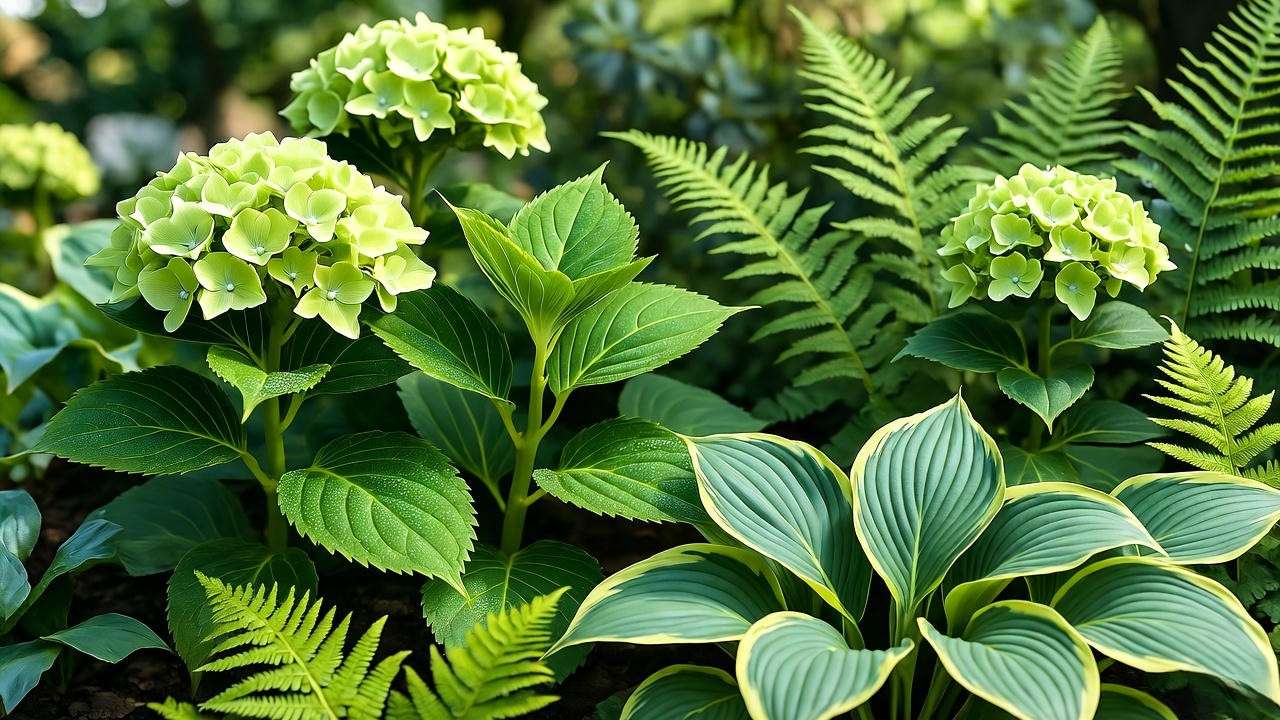
FAQs About Green Hydrangea Care ❓
To address common reader queries and boost SEO, here are answers to frequently asked questions about green hydrangea plants:
Q: How often should I water my green hydrangeas?
A: Water deeply 1–2 times per week, ensuring the soil stays consistently moist but not soggy. Adjust based on rainfall and temperature.
Q: Can green hydrangeas grow indoors?
A: Yes, in large containers with bright, indirect light. Ensure excellent drainage and maintain high humidity with a pebble tray or misting.
Q: Why are my hydrangea blooms turning pink or blue?
A: Bloom color changes are due to soil pH. Test your soil and adjust to 5.5–6.5 using sulfur (to lower pH) or lime (to raise pH) to maintain green blooms.
Q: How do I revive a wilting green hydrangea?
A: Check for underwatering or heat stress. Water thoroughly, mulch to retain moisture, and provide temporary shade during hot weather.
Q: Are green hydrangeas deer-resistant?
A: While not fully deer-proof, varieties like ‘Limelight’ are less appealing to deer. Use repellents or fencing for added protection.
Q: Can I propagate green hydrangeas?
A: Yes, take 4–6 inch stem cuttings in early summer, dip in rooting hormone, and plant in moist potting mix. Keep in a shaded area until rooted.
Q: How long do green hydrangea blooms last?
A: Blooms typically last 6–8 weeks, depending on variety and care. Deadheading spent flowers can encourage longer blooming.
Conclusion – Your Path to Thriving Green Hydrangeas 🌟
Green hydrangea plants are a stunning addition to any garden, offering vibrant beauty and versatility. By following these seven essential tips—choosing the right location, preparing soil, watering wisely, fertilizing strategically, pruning correctly, protecting year-round, and managing pests—you can ensure your hydrangeas thrive season after season. Whether you’re enhancing a backyard oasis or creating a show-stopping container display, these expert-backed strategies will help you succeed. Start applying these tips today, and share your blooming success stories in the comments or on social media! 🌸
For more plant care inspiration, explore our related articles on companion planting, soil health, or winter garden prep. Let’s grow a greener, more beautiful world together! 🌿

